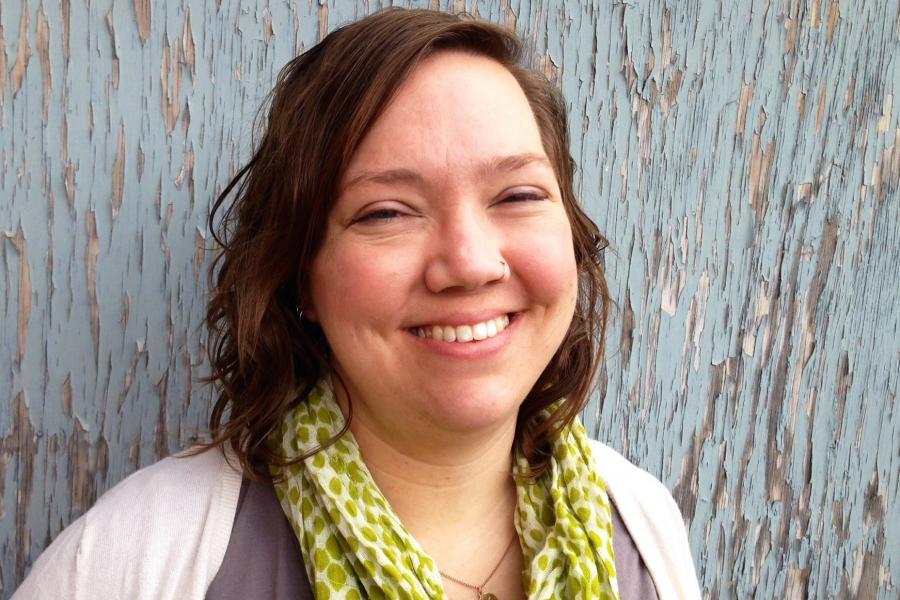
General Artist Information
Name: Anna Jacobson
Artist Discipline: Visual Arts
Art Form: Visual Arts
Grade Level Preference: K-12
Address: Minneapolis
Geographic Availability: throughout ND
Fee per-day : $300
Email: n40print@gmail.com
Phone Number: 701-330-5260
Website: http://www.annakjacobson.com
Biography
Anna Jacobson grew up on a family-owned organic farm in rural North Dakota where she was encouraged to explore, observe, learn and create. She continues to carry these principles with her as she creates and teaches art. Jacobson believes everyone should have the opportunity to experience art. Art should be part of a balanced and life-long education, providing learners of all ages with essential skills and knowledge they need to be productive and caring. Jacobson is a teaching artist for the North Dakota Council on the Arts. She also teaches for a variety of schools, state arts councils, art centers and museums. Jacobson received her BA in studio arts from Concordia College in Moorhead, MN in 2003, and her Master in Fine Arts degree from the University of North Dakota in 2010.
Teaching Philosophy
Art is a language that impacts everyone. We are surrounded by it and can be manipulated, amazed and challenged by it. My mission as an educator is to teach students how to use the language of art to convey independent and objective thoughts to their communities and ultimately influence the world around them.
I provide students with the necessary technical skills, knowledge of materials and history. Students have a wide variety of learning styles and fundamental skills. I take this into account while teaching. I use a variety of methods like hands on learning, peer critique and discussion, and technology. Once students have studied the history of the materials and skills, I encourage them to experiment with process and material. Now that you know the “rules” of art, you can go out and break them.
I am very committed to creating a safe and supportive environment where the students feel comfortable to express themselves. Learning in this way helps students dare to take risks and make mistake. Mistakes are crucial to the learning process by giving students the opportunity to recognize both formal and conceptual problems, to cultivate open-mindedness, and to creatively problem solve. This learning environment also creates a place where students can ask questions. As a student, I was encouraged to experiment and question the processes I was working with. And it had a profound impact on me and my body of work. Thus, I feel it is important for me to give my students the same opportunities to explore, to make mistakes and to question.
Once this working environment has been established, the student can sustain a dialogue about form, content, and personal meaning in their work with others. It is very important for students to be able to give and receive healthy criticism. Students also need to learn how to respectfully discuss issues about which they do not agree. When people do not have these skills, criticism can close communication or lead to hurt and disrespect.
The language of art should not be a tool only used by artists in their studios. It is my hope that the language of art can also have reaching effects for students who take an art class and go on to become accountants or scientists. I believe the language and fundamentals of art can help society as a whole become more caring, creative and informed global citizens.
Sample Residency Information
Residency Title: Printmaking Exploration
Grade Level: K-12 (can be modified to meet students’ needs)
Number of Sessions: 5
Description:
Printmaking is the process of producing “multiple originals” of an original artwork on to a support surface. Printmaking as a fine art is not the same as “making prints;" mechanical reproductions of artwork through an ink jet printer. Instead of manufacturing duplicates, the artist creates more than one original print from a single original surface or a matrix. The notion of printmaking can be traced back to the earliest stencils on cave walls. Later on, around 500 BC, Japanese artists created stencils using paper and human hair. Woodcutting appeared in China as early as the fifth century AD. The arts that comprise printmaking such as silk screening, engraving, etching, wood cutting, and lithography, continued to evolve mostly in Asia and Europe throughout the following centuries. They have become important to both industry and artistic experiment in the past century.
Short Lesson Plan
1. Make a simple print using your hands or something with a texture
2. Study the history of prints and look at some of the very first prints created
3. Discuss what is a relief print
4. Design a relief print on a Styrofoam plate
5. Discuss and show how to ink the plate
6. Print the Styrofoam plate multiple times
7. Discuss what worked and what didn't work
8. View and discuss contemporary printmakers
9. Design a relief print using a safety cut block
10. Demonstrate how to carve a safety cut block
11.Print multiples of the relief safety cut block
12. Discuss the proper way to sign a print
13. Sign prints
